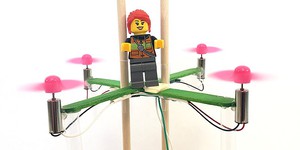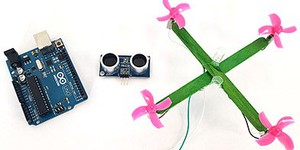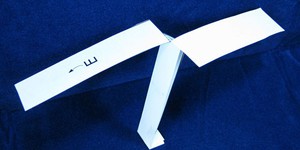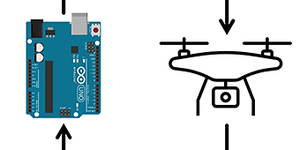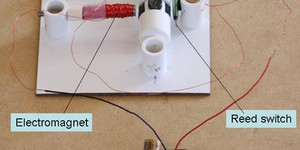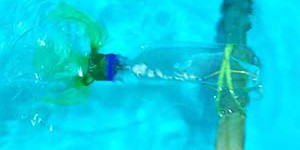Others Like “Efficient Propeller Design” (top 20 results)
|
Winglets are the short vertical "fins" at the wingtips of some airplanes. Have you ever wondered why they are there? If you have access to a wind tunnel, you can build model airfoils with and without winglets and see for yourself. If you're really ambitious, you can also build your own wind tunnel.
Read more
Try different wind turbine/propeller (chord length, pitch) designs by making models from balsa wood. Connect the spinning axle to a DC motor and measure the voltage produced across a resistor to measure power output. Use fan as wind source. (Judge, 2004)
Read more
How does weight affect a drone's speed? Is there a limit to how much weight a drone can lift? Find out with your own mini popsicle stick drone in this fun science project!
Read more
Most drones fly with a mix of human input and autonomous control based on feedback from electronic sensors. This allows the drone to fly up and down when the human operator presses a joystick on a controller, but automatically hover at a fixed distance above the ground when the operator lets go of the joystick. In this project, you will explore drone programming with an Arduino. What types of inputs and sensors can you make your drone respond to? What behaviors and responses can you program…
Read more
Have you ever seen a helicopter flying through the sky? It can be difficult to do a science project with a real helicopter, so in this project we will show you how to make a miniature paper helicopter called a whirlybird. Will your whirlybird be able to stay in the air as you add paper clips as weights? Try this project to find out!
Read more
Design a PID controller to control the altitude of a DIY mini drone using an ultrasonic distance sensor.
Read more
Motors are used in many things you find around your house, like your refrigerator, coffee maker, and even a lawn mower. In this electronics science fair project, you will get to build a simple motor, using a kit, and then test how the number of batteries (amount of voltage) used to power the motor affects its performance.
Read more
Solar cells provide a clean way of making electricity directly from sunlight. In this project you will build a simple circuit and experimental setup to investigate whether the power output of a solar cell changes with ambient temperature.
Read more
What keeps a submarine from spinning out of control? In this science project, you can investigate how
submarines use stabilizing fins to move forward. You might even figure out the secrets to maneuvering a submarine!
Read more
Flying kites is an excellent way to learn about aerodynamic forces. In this science fair project, you will build and test a variety of kite designs to see which flies best in low wind speeds. You will use an inexpensive anemometer to accurately measure the wind speed. Since you will be choosing which kites to build and test, the experimental procedure provides a general outline for the experiments, but there is a lot of opportunity for you to be creative with your kite designs. This is a DIY…
Read more
|
Explore Our Science Videos
How to Make Paper Circuits
Build a Gauss Rifle
Build a Simple Electric Motor




